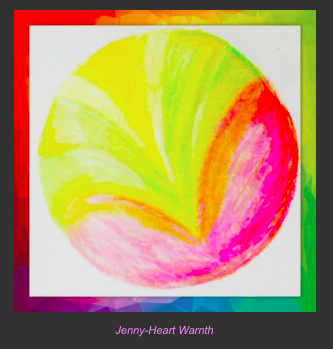Jenny–Heart Warmth
Gioia and Rebecca often joke that despite the fact that they share the exact same profile on the Myers-Briggs–they are both heavily weighed on the scale of extroverted, feeling, and intuitive perceivers–they are opposites in their natural dispositions. Gioia is generally light, energetic, and buoyant while Rebecca is more frequently anxious, moody, and easily fatigued. Because they are both such exaggerated feelers, it’s self-evident that Gioia would want to maintain her positivity and Rebecca would want to increase hers.
Although it’s a no-brainer that it feels good to feel good and not so great to feel bad, there is something much more to feeling good than just feeling good. We’ve mentioned before the negativity bias–the baseline tendency to notice and give more weight to negative cues in our environment. Simply put, negativity overrides positivity, it impacts us more deeply than positivity, and it takes longer to overcome than positivity.
Because the negativity bias is so pervasive, it means that regardless of whether we are prone to negativity like Rebecca, or more naturally positive like Gioia, we are missing a significant amount of information that is occurring in our internal and external environment. Positivity gives us access to that data. It does so by literally broadening our perceptions–when we are feeling better we not only notice more of what is happening in and around us but we tend to interpret that input more positively. However, the caveat is that because positivity doesn’t come as naturally as negativity we have to consciously induce it.
Barbara Fredrickson, founder of the Positive Emotions and Psychophysiology Lab at the University of North Carolina, suggests that most of us are not experiencing enough positive emotions to really tip the scales of our perceptions. That might be obvious with someone like Rebecca who is prone toward negative emotions, but Fredrickson says, again, that most people are experiencing more negativity than positivity and as a result they are stagnating not only emotionally but psychologically. She calls this languishing and suggests that we need higher ratios of positivity to boost ourselves into flourishing-being more creative, optimistic, energized, excited, hopeful, and best equipped to handle the stressors that we encounter and the complexities of our lives. She maintains that, because negativity is such an unconscious default, we must actively practice positivity.
What is so important about Fredrickson’s work is her proposition that that we don’t only want to feel better for the sake of feeling better, however gratifying that might be, but that we need to feel better because it is affecting how we see the world. Positivity helps us see many aspects of our internal and external environments that our naturally negative minds keep from our conscious awareness. Positivity not only helps us challenge the dominance of the negativity bias but it helps us see more more possibilities when we are faced with negativity and helps us feel more hopeful about being able to overcome it. Positivity helps us cope better with and bounce back more quickly from negativity.
Not surprisingly, that means we need to introduce positivity more frequently. What may be counterintuitive is that positivity doesn’t need to be significant, monumental, or even important. Fredrickson suggests that all we need is micro moments of positivity-a laugh, a hug, a moment of peace, a rhythmic song that’s sparks us into dancing, a savory sip of coffee in the morning, a delicious stretch after we’ve been sitting at our desk for hours, etc. Small as these micro moments may be, if we strategically infuse them into our lives (especially into those situations we find most stressful!) they can effectively counterbalance the weight of negativity.
Here is a handout on The Science of Feeling Good with some more resources on this topic. Stay tuned for next month’s newsletter in which we will go into more detailed ways to increase micro-moments of positivity. Find out your ratio of positive to negative emotions by taking Fredrickson’s Positivity Ratio questionnaire and begin to notice how your perceptions of things change when you feel better.
If you’re in the DC area Saturday afternoon, April 27, 2019 from 1-4 pm and want to enjoy an afternoon of positivity making small boxes in honor of your resilience and strengths, come to Smith Center for Healing and the Arts (click here to register). We’d love to see you there.
Positively, Rebecca and Gioia
Art Directive
Use a plate to draw a circle/mandala on a piece of paper. Think about a positive emotion you would like to experience more. Choose any kind of art medium (we might suggest something looser and more expressive like paints, chalks, or pastels) and use color, line, and shapes to express how that emotion feels. Once your done, put the image up somewhere that you will see it frequently and let it remind you of that positive feeling. Post it to our FB page if you would like. We’d love to see them!
